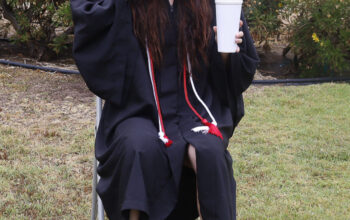When thinking about vegan options at Pierce College, the first idea that comes to mind is how to be healthy and rid the body of waste. Students are becoming more obese because they’re eating unhealthy foods and not giving themselves the proper nutrients needed.
Well, veganism is not as simple as changing a diet and calling it a day. Many complicated procedures must be considered to transition to such a lifestyle.
Vegans exclude all forms of meat, dairy and even fish from their diets. They will refuse to use any products that have been animal tested or eat anything that has come from an animal, such as eggs.
Eating healthy can have just as bad of a downfall as to eating unhealthy. When thinking in terms of students’ eating habits, we have to consider that not everyone wants to go vegan.
Everyone knows that it costs more than your average penny to be fit and healthy.
Students are already struggling at campus trying to get a bag a chips, yet pay double for a salad or vegan burger.
When it comes to being vegan, let’s think about the excessive weight loss, which can become weight gain or the lack of some vital nutrients.
For beginners, when you just changed a diet, your body wouldn’t be use to eating healthy, so to fill that void, we buy the foods that have high processed carbs, sugary, fatty foods or more vegan snacks. The lack of nutrients can affect omega fatty acids, B-12, and folate. Any lack of vitamins can cause severe weakness, fatigue and even constipation.
According to the article “Negative Effects of Veganism” posted by SFGate, “Omega-3 fatty acid deficiency can lead to skin rashes, poor wound healing, slow growth in children and increased risk of infection. Breast milk of vegan mothers also tends to be low in omega-3 fatty acids, which are necessary for proper brain development in infants.”
Omega-3 fatty acids are abundant in plant foods such as flaxseed, walnuts and pumpkin seeds, but have to be converted to their active forms, EPA and DHA. Your body converts them with only 12 percent efficiency so you need to eat these foods in very high quantities, which may be impractical.
Schools have enough emergency phone calls already of students passing out or feeling ill. Changing a diet or making it more vegan may increase those chances significantly.
Eleni Enge, a student at Pierce, has struggled with maintaining a vegan lifestyle.
“I’ve been vegan for three years now and I like it,” Enge said. “However, when I first started it was quite hard for me so I started small and then I gradually progressed.”
She said her major and outlook toward animals has inspired her to change her diet.
“It may be easier for me because I’m currently going to school to be a veterinarian, and seeing animals harmed or been eaten hurts my feelings,” Enge said.
Like Enge, many students have transitioned from processed foods to veganism, but most tend to fall through the cracks. Going vegan is a consistent commitment, and continuously supplying these specific needs may prove problematic for Pierce.
The campus is just fine with selling food and snacks just the way they are. It keeps a balance between the two, whether it’s health or not. Let the choice be made by the person and not be focused upon the school to dictate.
More options would just throw everything off balance, and worries concerning having to pay more for food would arise. It would be more difficult for the school to maintain its supply of lettuce, vegetables and other produce that spoils within a few days if it’s not being sold.
They would need a bigger refrigerator and also invest in more workers to suit these needs. More investment on the school side meaning more we would have to pay more on the tuition side or out of pocket just to eat and to keep it going.
Restricting every students’ diet could be expensive and is not within the school’s budget. If students really cared about maintaining a healthy lifestyle, they could bring food from another reputable source.



